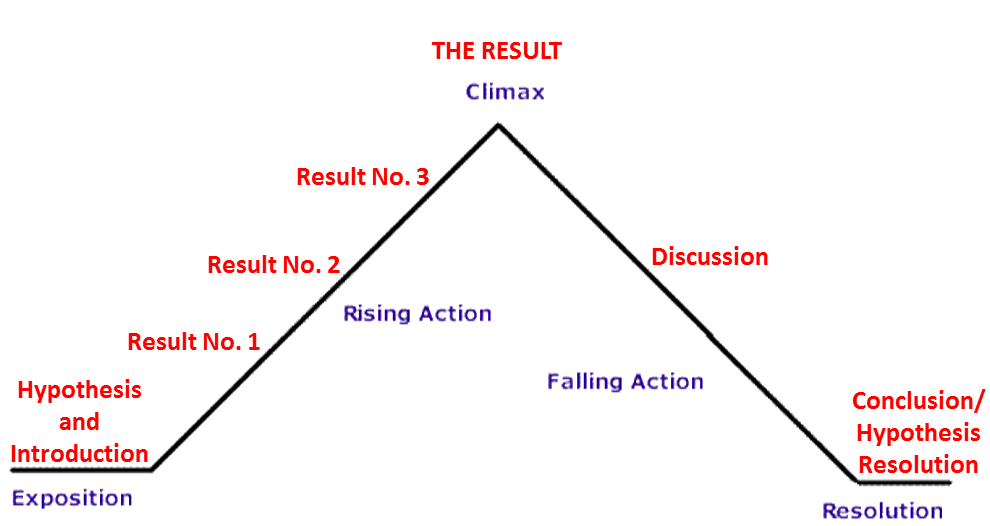Last 29th of May 2015, iJOBS hosted a seminar entitled “The Art of Scientific Storytelling” with guest speaker Dr. Rafael Luna from Luna Scientific Storytelling LLC and Harvard Medical School. He began his talk by asking us to define “story” without using the word “narrative”. You’d think it was a simple question, but I found I couldn’t define it properly. Dr. Luna has been working on a step-by-step process for writing scientific manuscripts and journal articles and we were very lucky to have him share his writing process with us, which I am going to try and explain in an extremely condensed form:
I. Scientific writing = storytelling
 (edited from: http://staff.fcps.net/tcarr/shortstory/cinderella.htm)
(edited from: http://staff.fcps.net/tcarr/shortstory/cinderella.htm)
The plot diagram showing parts of a story (in blue) can also be used to show equivalent parts of a scientific manuscript (in red).
II. Order of Operations (No, not PEMDAS)
However, similar to the order of operations in mathematics, Dr. Luna pointed out that a story/scientific manuscript also follows specific steps, which he suggests as:
- Title = Conclusion
Start with a title. The best way to overcome that staring contest between you and that blank computer screen/paper is to come up with a title. Most people leave the title for last, but Dr. Luna suggests that this should be the first thing you write. And his recipe for a good title is that it contains the following elements: PROTAGONIST, ANTAGONIST, CONFLICT, SCENE, RESOLUTION, and STAKES.
- Abstract
The abstract, aside from the title is one of the most important parts of your manuscript, especially in this day and age where most readers will read just these two before deciding to read your whole paper.
- Figures/Results
The results and list of figures should follow a logical train of thought, which may or may not be in chronological order. Using the plot diagram above as a guide, the figures should build on top of each other and ultimately lead to THE MAIN RESULT of your paper.
- Discussion/Introduction
If you notice, the first three parts will provide an outline that your discussion and introduction can fit into.
III. A few more words of wisdom…
- Be intentional about your wording. This is especially important in scientific storytelling because you are dealing with facts and although you want to tell a story, you want to make sure you’re telling the most accurate story possible.
- Writing is an iterative process. You’re not going to sit down and write one perfect draft and submit it as a final manuscript. Edit, revise, rewrite.
- As soon as you reach a resolution, stop writing and submit. Most scientists have this problem. We don’t know when to stop, we want to include every little experiment and detail into the story. Figure out your conclusion/hypothesis resolution, and when you reach it, that’s when you know when to stop.
Writing is an integral part of the scientific process, and it is a skill that all scientists should possess. We as scientists are tasked with making sure our work makes it out of the confines of the lab and reaches everyone in the world. We should always remember that we do what we do, the constant search for knowledge, to benefit the whole of humanity and the rest of the world. Because like that tree that falls in the middle of a forest, if a scientific breakthrough occurs in the lab and doesn’t get published, did it really happen?
If you want to know more about Dr. Luna’s story and work, check out the Luna Scientific Storytelling LLC website at http://www.lunascientificstorytelling.com/